Thomas v homki: boiler and water heater
In this article I am going to tell you how a boiler differs from a water heater in terms of device and consumer characteristics. In no case do I want to make any final verdict on the advantages of a solution: the purpose of writing this article is to explain the key features of both devices to the potential buyer and share my own experience of their operation.
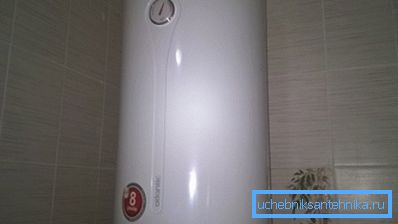
First meeting
First, let's look at the definitions:
- Boiler, or storage water heater is a heat-insulated tank with a heating element. In the role of the latter is the heating element, gas burner or heat exchanger associated with the heating system and the boiler (the so-called indirect heating boiler);
- Instantaneous water heater - It is a heat exchanger that heats the water as it is consumed. The water tank inside the water heater is a very small tank, the only function of which is to ensure water contact with the maximum area of the heat exchanger and prevent its overheating.
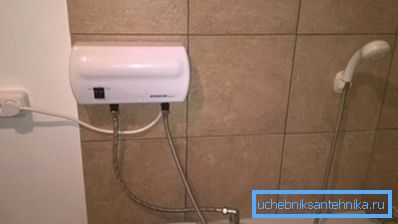

Together, the massive boiler and compact flow device resemble the characters of the famous cartoon.

So: the main difference between the water heater and the boiler is that the first heats the water as it is consumed, and the second creates a supply of water heated to the desired temperature.
Load on the electrical network
Differences between the boiler and the water heater include, among other things, a significant difference in power consumption.
Flow heater
The minimum value of the electric power of the device is 3.5 kilowatts. This is the device - Atmor Basic - installed in the bathroom of the attic floor. Power consumption allows you to connect it to a conventional euro socket.
Warning: hidden wiring to avoid overheating should be calculated based on a maximum current of 8 amps per square millimeter of copper wire. If so, for a current of 16 amps, corresponding to a consumption of 3.5 kW, a wiring with a cross section of at least 2 mm2 is needed.

The maximum power of electric flow heaters, commercially available - 24 KW. They are connected only by a separate cable, abandoned from the shield, and only to the networks of 380 volts.
Gas devices, for obvious reasons, are undemanding to the wiring: the required power consumption is provided by the burner.
However, their operation requires compliance with certain security measures:
- Installation is possible only in a room with its own ventilation channel;
- The device needs a constant flow of fresh air into the room where it is installed.
Boiler
Typical power of an electric boiler is from 1.3 to 2 kW.
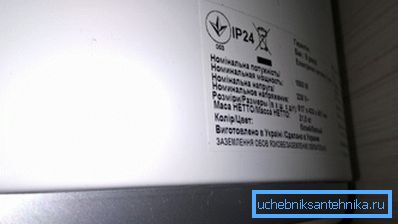
It can be connected to any electrical outlet with a wiring cross section of 1.5 mm2. Connecting through an extension cord is undesirable, but with urgent need it is possible.
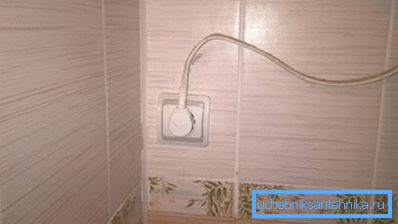
Temperature stability
What is better - a water heater or a boiler - in terms of the stability of the outlet temperature? Agree that its drops are rather unpleasant when you try to wash the dishes and even more so to take a shower.
| Flow through | Accumulative |
| At a fixed heating power, the temperature rises relative to the original by a fixed number of degrees. In winter and summer, the water temperature at the same pressure will differ by 10 - 20 С | The water temperature at the outlet is always constant. It is determined by the manually set position of the thermostat on the boiler body |
In the operation of the flow heater, I noticed another unpleasant moment. In winter, the temperature of the water inside the water supply system located within the heated premises is noticeably different from the temperature in the water supply main. As a result, after a few minutes of showering, the water cools sharply.
Separately, it is worth mentioning gas flow heater (gas column). In it, the water temperature is regulated by automation - bimetallic or digital thermostat. The thermostat is triggered when the leaving water temperature drops and increases the flame of the burner.
However, the rather low adjustment accuracy and large inertia of temperature changes make an attempt to take a shower by constant struggle with the lever or the faucets of the mixer. When the water pressure increases, the burner ignites and quickly warms the water to an uncomfortably high temperature; with a decrease in water as quickly cools to ice.
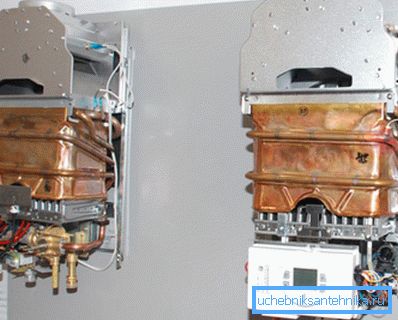
Adjustment accuracy
According to this parameter, the difference between the boiler and the water heater is that it allows you to set the target outlet temperature with maximum accuracy. The scale of the thermostat, as a rule, is deprived of graduation, but the trial and error method allows you to quickly find a comfortable temperature.
The flow-through heater, alas, does not know how to set a constant outlet temperature at all — simply due to the fact that by bringing in a constant power, it is possible to heat the flow by a certain number of degrees. Following the inlet temperature, the outlet temperature will change.
No, you can still regulate it.
For this serve:
- Step adjustment of power of the heater. In particular, Atmor Basic allows you to use power of 1.5, 2 and 3.5 kW;
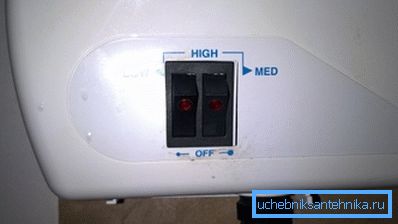
By the way: power other than 3.5 kW is used only in the peak of the summer heat. In winter, a 3.5-kilowatt butt is enough to heat the minimum flow of water to the minimum comfortable temperature.
- Manual head adjustment. The greater the flow, the lower the temperature.
Efficiency
Electric boilers - water heaters are far less economical than flow boilers.
There are two reasons for this.
- Due to the limited power of the flow heaters, their creators have to limit the flow of water through the device. This, in particular, is achieved by using special shower heads and gander with a small clearance. Less water consumption - less power consumption;
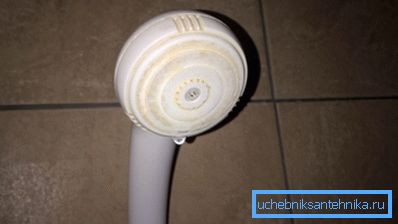
- What is even more significant, the boiler periodically turns on the heat to compensate for heat loss through the insulation. A layer of polyurethane foam about 5 cm thick protects the tank from cooling reliably enough; however, from 1 to 3 kWh per day is still spent only on heating the atmosphere around the boiler.
Cost of
At the time of purchase, the price of heaters installed in my house was:
- Flow Atmor - about 2,000 rubles;
- Accumulative Atlantic with a tank of 80 liters - about 6,000 rubles.
Since then prices have risen slightly, but the trend continues today: the boiler costs much more.
In the upper price category, there are combined boilers - water heaters with a tubular heat exchanger, which allow connecting the device to the heating network as a boiler of indirect heating, and TENH-ohm to maintain the temperature at peak load or when the heating boiler is off. In this category, prices start at 27-30 thousand rubles.
Installation
In the simplest version, the flow heater with its own gander or shower is easy to connect with your hands directly to the mixer, without altering the liner.
Connection instruction looks like this:
- The mixer switches from gander to shower;
- A watering can is removed from the shower;
- The shower hose connects to the heater inlet.
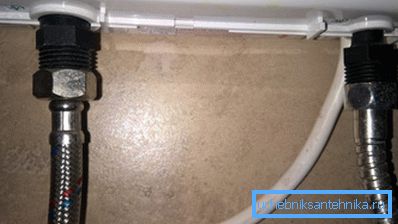
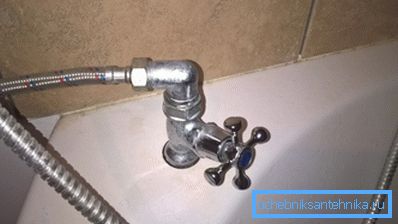
Flow heaters that are installed in the water line break (for example, Atmor In-Line) do not require any additional devices for installation. The only type of fittings that may be required for connection is a gearbox, which reduces excessive pressure to the recommended by the manufacturer (for the notorious Atmor In-Line - no more than 7 kgf / cm2).
Note: the manufacturer allows the use to connect flexible hoses, which greatly simplifies installation.
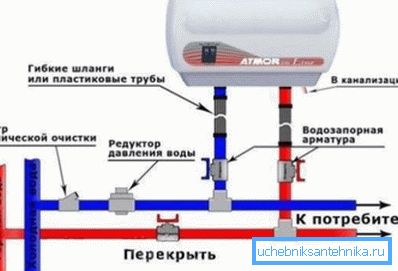
At the boiler, a separate safety valve is added to the gearbox.
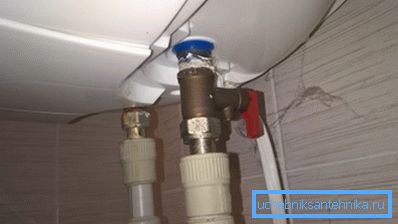
It is installed at the entrance to the heater; The valve can be connected to the sewage system. For installation it is strongly recommended to use rigid connections.

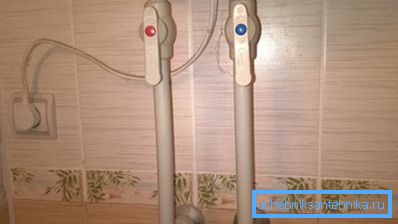
In the installation of devices there is another subtlety:
- Most storage heaters are mounted on the wall. It is clear, only on the capital. The owner of the bathroom with plasterboard walls will have to look for a boiler in a rather rare outdoor version;
- The flow-through device with its weight of 1-2 kg can be installed on any partition. To distribute the load over the maximum wall area, I screwed my Atmor to the trimming of plywood instituted for drywall.
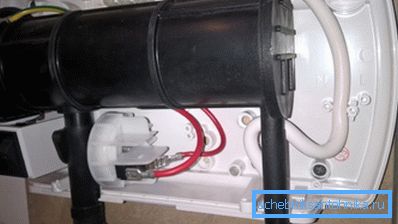
Power / Volume
How to choose water heaters - boilers and instantaneous water heaters in terms of tank volume and maximum power?
Flow through
- The power of the flow heater of 3.5 kW is enough for not too comfortable washing in the warm season;
- A power of 5 kW is already sufficient for comfortable washing in any season;
- 7 kW allow to use a usual shower watering can instead of a product with the reduced size of nozzles.
Accumulative
- A 30-liter tank makes it possible for one person to wash under the condition that water is maximized;
- 50 liters make it possible to wash without the slightest discomfort;
- 80 liters with minimum savings are enough for two people to take a shower with a minimum break;
- 120 liters are designed for a family of three.
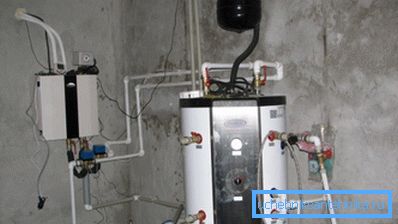
Note: the lower the temperature set on the thermostat, the higher the actual water flow.
Conclusion
I hope that my experience with heaters will help the reader to make a good purchase. Additional materials, as always, can be studied by viewing the video in this article. Feel free to share your own experiences in the comments. Successes, comrades!